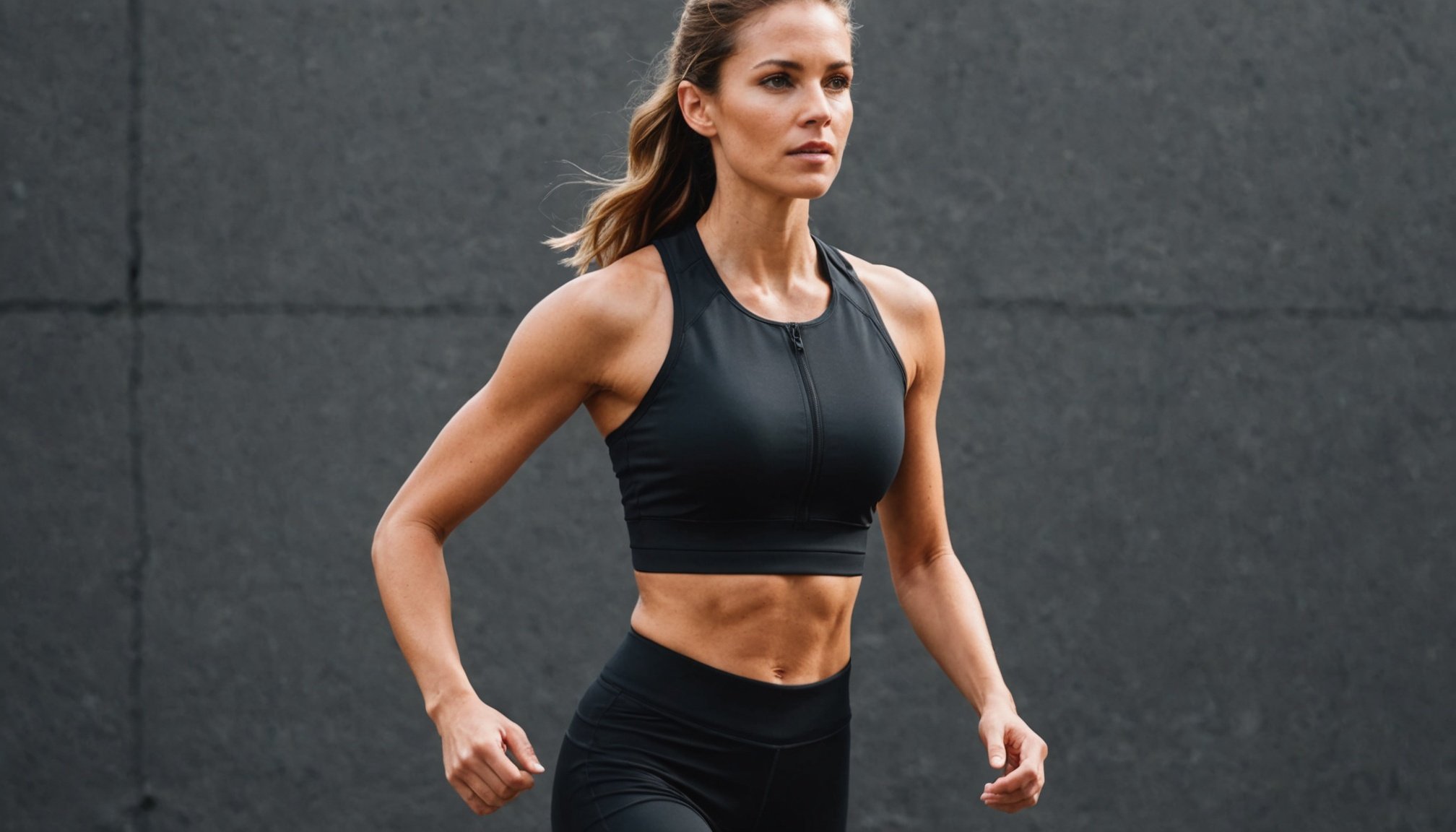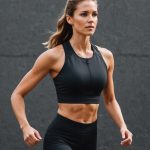Overview of Women’s Activewear Durability
When discussing the significance of durability in activewear, fabric quality stands out as a pivotal factor. High-quality materials ensure that activewear not only lasts longer but also withstands the demands of an active lifestyle. The stresses of frequent washing and intense physical activity can compromise less durable fabrics, leading to early wear and tear. By investing in durable fabrics, consumers are often rewarded with garments that maintain their form and functionality, maximising their value over time.
Durability in activewear can significantly impact both performance and comfort. Breathable and resilient fabrics enhance movement and ensure users remain cool and comfortable during workouts. Conversely, less durable materials may stretch or wear thin, affecting fit and support, ultimately diminishing performance.
Also to discover : Top Techniques to Minimize Screen Time and Boost Your Eye Health
Factors affecting the longevity of activewear fabrics include the type of fibre, construction techniques, and maintenance routines. Synthetic fibres like polyester and nylon are prized for their strength and flexibility, often enhancing an item’s lifespan. Moreover, manufacturers increasingly employ advanced weaving methods to further bolster a garment’s resilience. Regularly following care instructions helps to preserve these properties, ensuring the activewear remains in top condition.
Common Fabrics Used in Women’s Activewear
Activewear fabrics significantly impact the performance and comfort of clothing. These specialised materials are crucial in ensuring flexibility, durability, and breathability. Below are some commonly used fabrics.
Also read : Finding the Perfect Exfoliation Routine for Sensitive Skin: How Often Should You Do It?
Polyester
Polyester is a synthetic fabric widely recognised for its durable nature. It offers excellent moisture-wicking properties, making it ideal for activewear. This fabric is notorious for its ability to withstand regular wear and tear, hence a common choice for high-intensity sports apparel. It’s also lightweight and resists shrinking and creasing, maintaining its shape and quality over time.
Nylon
Known for its strength and elasticity, Nylon is a staple in activewear. This fabric offers significant breathability, helping to keep the skin cool during rigorous activities. It also provides excellent abrasion resistance, making it useful for gym wear and outdoor clothing. Its silky texture and natural resistance to mildew add to its appeal in activewear.
Lycra/Spandex
Lycra, or Spandex, is renowned for its superior stretchability, often used in combination with other fabrics. Its ability to enhance fit and comfort makes it ideal for yoga pants, leggings, and compression wear. This material is also resistant to perspiration, ensuring longevity in active environments. Its flexibility supports unrestricted movement, an essential feature for any activewear fabric.
Innovative Fabrics for Enhanced Durability
In the realm of innovative activewear fabrics, modern technology has transformed how durability and functionality are achieved. Advanced fabric technologies are at the forefront of this evolution, leading to a range of garments that outperform traditional options.
Moisture-wicking fabrics are a prime example. These materials are engineered to draw sweat away from the skin, keeping the wearer dry and comfortable. Fabrics such as polyester blends and merino wool excel in this category, maintaining effectiveness even during intense activities.
Another noteworthy development is anti-odor technology. Materials treated with silver ions or other antimicrobial agents prevent bacterial growth, reducing unpleasant odours. This is particularly beneficial for activewear that’s subject to frequent use.
Brands like Lululemon and Under Armour are well-regarded for their application of innovative activewear fabrics. They utilise these technologies to create clothing that not only enhances performance but also ensures longevity.
These advancements make innovative activewear fabrics indispensable in today’s active lifestyle, offering practical solutions to common frustrations while enhancing overall athletic experience.
Fabric Durability Test Results
Understanding how fabric withstands wear and tear over time is crucial. In this section, we’ll delve into the results of fabric durability testing, focusing on various aspects such as abrasion resistance, stretch resilience, and wash durability.
Abrasion Resistance
Abrasion resistance measures a fabric’s ability to withstand surface wear caused by friction. In our fabric durability testing, this was assessed using a specialised machine that repeatedly rubs the fabric sample against a standard abrasive surface until a hole forms. This method helps determine which fabrics offer longer-lasting use in high-contact areas.
Stretch Resilience
Stretch resilience refers to a fabric’s ability to return to its original shape after being stretched. Our tests revealed that fabrics with higher elasticity composition showed significantly better recovery rates. This form of fabric durability testing is especially important for materials intended for sportswear and flexible applications.
Wash Durability
Wash durability impacts how a fabric performs after multiple washing cycles. Tests included repeated laundering followed by checking for shrinkage or colour loss. The fabric durability testing results suggest cotton-polyester blends often exhibit remarkable performance in maintaining appearance and size after frequent washing. Understanding these results helps consumers make informed choices and extends the life cycle of the chosen fabric.
Expert Recommendations for Fabric Selection
Choosing the right fabric is crucial to enhancing your athletic performance and comfort. Expert fabric recommendations can guide you in selecting materials tailored for different activity types. For high-impact sports, durable and stretchy fabrics are ideal. These allow ease of movement and withstand the rigours of intense workouts.
When selecting activewear for varying climates, industry professionals suggest moisture-wicking fabrics. These materials keep you dry and cool in hot environments by drawing sweat away from your skin. On the other hand, for colder climates, experts emphasise the importance of thermal-retentive fabrics. These materials help maintain body warmth without compromising on breathability.
The advice extends from industry experts and athletes alike who underscore the need for high-performance fabrics. Many recommend synthetic blends due to their durability, flexibility, and advanced moisture-management properties. Polyester and spandex are popular choices among experts for their ability to maintain shape while providing the necessary stretch.
Finally, always consider personal preference and specific activity requirements. These expert suggestions are intended to offer practical solutions, ensuring you make informed decisions about your activewear fabric choices.
Maintenance Tips for Long-lasting Activewear
Ensuring your activewear remains in top condition involves understanding specific care tips for activewear.
Washing Recommendations
When washing activewear, it’s crucial to use cold water and a gentle cycle to maintain fabric integrity. Many activewear pieces can benefit from turning inside out, preventing friction damage. Always use a mild detergent, avoiding softeners that can break down material elasticity. These care tips for activewear help preserve fabric quality.
Drying and Storage Practices
Properly drying and storing activewear is essential. Air drying garments in a shaded area helps maintain shape and elasticity, whereas direct sunlight can degrade material. Store clothes in cool, dry settings to avert moisture damage. These methods align with general care tips for activewear.
Repair and Care for Damaged Activewear
Prolong the life of your activewear by implementing repairs when needed. Patching holes or reinforcing seams with a needle and thread can mitigate further damage. Ensure any repairs follow the garment’s material guidelines for durability. Considering these care tips for activewear, your clothes can withstand repeated use while retaining their quality and fit.
Conclusion
When choosing durable activewear, it is vital to focus on specific key considerations that ensure longevity and performance. The fabric is the main component; selecting materials like polyester or nylon ensures resilience and flexibility. Additionally, pay attention to stitching quality, as reinforced seams enhance durability under active conditions.
Considering your activity type plays a significant role in choosing durable activewear. Running may demand moisture-wicking properties, while yoga could require more stretch and comfort. Furthermore, maintenance is crucial; follow washing instructions to retain fabric quality over time.
Making informed purchasing decisions involves understanding these factors and analysing your needs. Compare brands based on fabric quality and user reviews to gauge long-term satisfaction. Remember, investing in durable activewear can save money by reducing the need for frequent replacements.
Finally, sharing personal experiences with durable fabrics can offer valuable insights to others navigating the same choices. Engaging with communities that discuss these topics can foster informed and empowered decisions. This collaboration could help refine your criteria when choosing durable activewear, contributing to a more satisfying and sustainable wardrobe.













